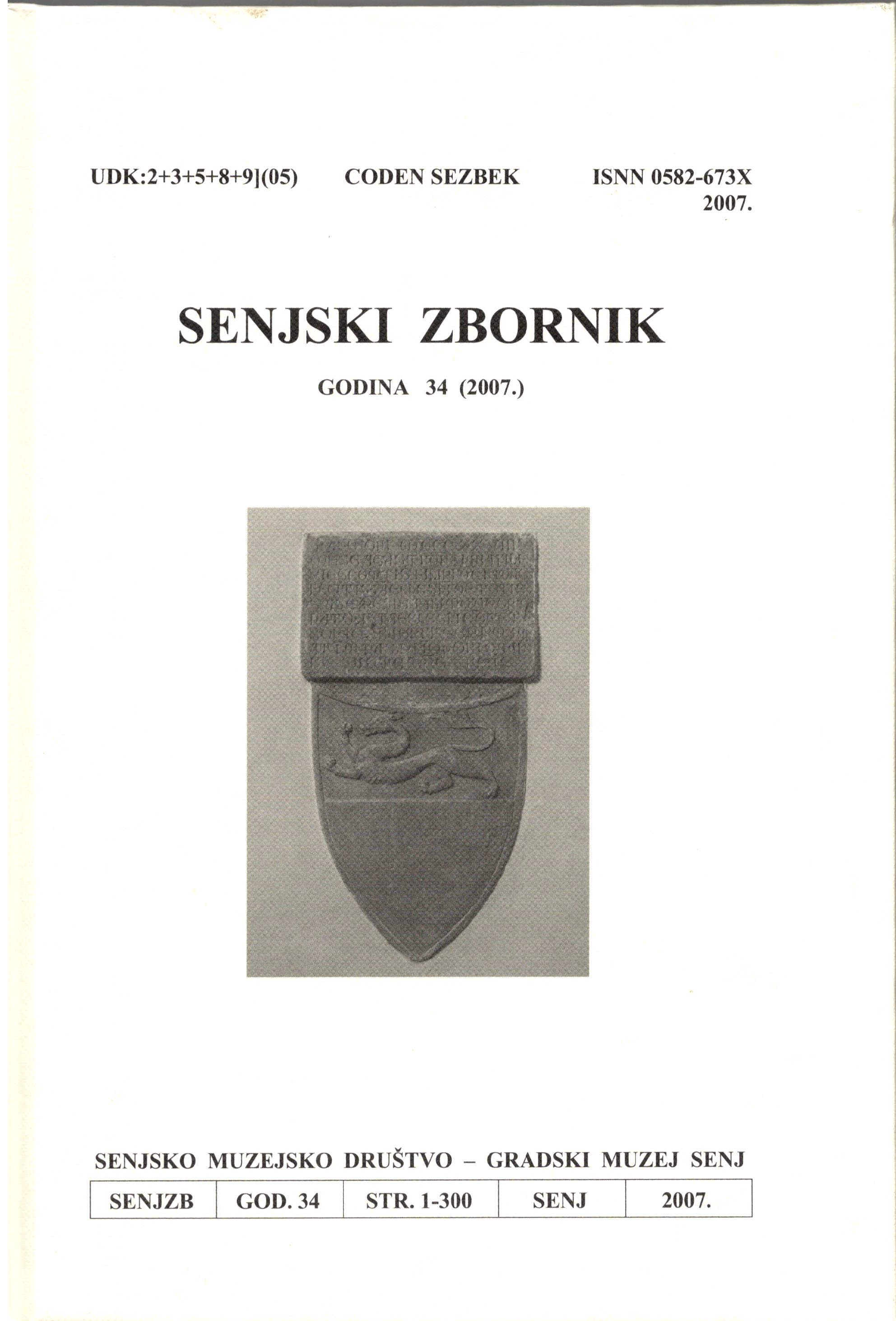Prilog o Senju u 13. i 14. st. za uspona knezova Krčkih, načelnika i knezova Senjskih
Supplement about Senj in the 13th and 14th centuries during the rise of the counts of Krk, governors and counts of Senj
Author(s): Petar StrčićSubject(s): Cultural history, Diplomatic history, Local History / Microhistory, Military history, 13th to 14th Centuries
Published by: Senjsko muzejsko društvo i Gradski muzej Senj
Keywords: Senj; Counts of Krk; Senj; 13th-14th centuries;
Summary/Abstract: The Counts of Krk embedded their power very well on the island of Krk soon after their arrival in the first half of the 12th century. As Venetian subjects, they started to cross the channel, spreading their power over the neighbouring Croatian coast and became vassals of the Croatian-Hungarian Kings. In order to gain as many possessions as possible along the eastern Adriatic coast and hinterland (Modruš, Vinodol etc.) they used the real and invented gifts of some monarchs, real and falsified documents/deeds of donations. They especially took advantage of the troubles during the Tartar/Mongolian intrusion in Croatia in the 13th century. They intervened in dynastical battles and they personally participated in bringing Anjou from Naples to Buda. Their unstoppable rise can be also confirmed by the ‘benevolent’ bringing and acknowledgement of some statutable rights to their subjects – ‘Vinodol Law’ (glagolitic) 1288 and the Senj Statute (Latin) and the Krk Statute (glagolitic) 1388. During this period they achieved the Ban/Vice King position in one part of Croatia, they had relationships with the royal houses of Europe etc. In the way of this success, the coastal town of Senj had an important, sometimes even crucial advantage being on the crossroads of European-Mediterranean roads and it was on a fruitful rise. The Knights Templar were long time governors of the town, but the Counts of Krk gained it and became its governors and feudal masters/counts and they used its advantages. In this way, Senj finally became one of the most developed ports on the Adriatic Sea, as the main short crossroads between the hinterland and the rest of Croatia and Hungary with Europe, and continental and maritime connections with the southern Croatian coastland, with overseas, Apennine peninsula and other parts of the Mediterranean.
Journal: Senjski zbornik - prilozi za geografiju, etnologiju, gospodarstvo, povijest i kulturu
- Issue Year: 34/2007
- Issue No: 1
- Page Range: 161-196
- Page Count: 36
- Language: Croatian

